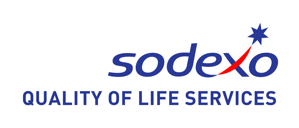The first thing to understand is what happens during the brewing process. The coffee grounds are being exposed to hot water in order to “extract” the essential solubles (flavor compounds, solids, and oils) from the grounds.
Brewing time must be controlled exactly. Incorrect brewing time is one of the main reasons people get poor results when preparing coffee. The shorter the extraction time, the less the essential flavor compounds dissolve that were so carefully developed during the roasting process. Over-extraction will dissolve too many of the undesirable compounds. The challenge is to get the grind and the extraction time in perfect balance. Typically French Press and Pour Over brewing methods use a 3-4 minute extraction time depending on grind. Drip Brewers can use a shorter extraction time. It comes down to experimentation, and finding your perfect brewing formula.
Standard Drip Coffee Maker
Regular drip coffee makers are available in a range of styles, cup capacities and prices. Though some models can be pricey, drip makers are generally the most economical, when compared to specialty coffee machines. The most common sizes are 10 and 12 cup with smaller models being more practical for small households. Smaller 4-cup makers are ideal for hotel stays or a single person. Drip coffee makers are available that accommodates a thermal or glass carafe, or for dripping right into a travel mug. A standard drip coffee maker is the most common type of brewer and even non-coffee drinkers like to have a standard drip maker on hand for guest serving. If you were looking for a practical coffee maker, this would be it.
Percolator Coffee Maker
Once the standard brewer years ago, the percolator coffee maker is making a comeback.
Though variety and capacity choices are limited especially in the electric models, some believe a percolator brews a richer, full-bodied coffee compared to a drip model. Glass percolators for stove-top use are still popular with those who like to percolate the coffee grounds as long as they want, but the electric percolator coffee maker with an automatic setting is the most common for home use. Non-electric stovetop percolators continue to be extremely popular as a camping coffee pot.
Large electric coffee urns for brewing more than 12 cups operate on the same basis as a smaller home percolator coffee maker and continue to be very popular for social events such as weddings and buffets and catered events.
Pod, K-Cup or Other Single Use Coffee Makers
Single use (one cup) coffee makers, where the coffee or tea pod, capsule or K-cup is placed in the basket and water from the reservoir drips through it, to a single coffee cup are becoming more popular. The benefits of a single-serve coffee maker are convenience, ease and effortless brewing, not to mention the taste experience, as pods, capsules and k-cups are available in various flavor choices. Though excellent for quick and clean serving of specialty coffees, teas, herbal beverages and lattes, producing only one serving at a time require more patience, but can be worth every sip.
Some pod-style coffee makers will accept other brands of coffee capsules, but this should be confirmed before buying. You should also check the availability of pods or K-cups in your area, plus factor in the operation cost of buying coffee, tea pods or K-cups for use with these coffee makers. Some espresso machines operate on a specialty pod system.
French Coffee Press
This style of coffee maker has been around for decades and is increasing in popularity. This method involves pouring boiled water over the grounds in the Press. This type of coffee maker is not designed for stovetop use, so coffee should be made just prior to serving. Typically brewed for single cup but can accommodate up to 4 cups.
Put in the ground coffee (a coarser grind than for a drip coffee-maker using a paper filter), fill with boiling water, steep 4 minutes, press the grounds to the bottom with the filter piston, and pour
Pour Over
Manual coffee-making methods are becoming an increasingly popular option for home enthusiasts and coffee shop baristas alike. The abilities to control every variable in the brewing process create a cup that’s exactly suited to one’s preferences, and highlight the unique character of the coffee has convinced many to make the switch. This new popularity has prompted the birth of several new methods and devices, as well as the resurrection of older methods.
Espresso & Specialty Coffee Machine
The higher-priced variety of coffee makers is coffee machines that brew espresso and steam milk for cappuccino or lattes. With commercial coffee machine functions and features, these brewers allow you make specialty coffees at home, for a lot less than the coffee shop beverages. Some models brew regular coffee, making these large machines more practical for everyday use. Styles vary from pump-driven bar systems to pod drip machines with prices that can reach into the thousands. Things to consider when buying a specialty coffee machine: Physical size, serving capacity, function and type of brewing.
